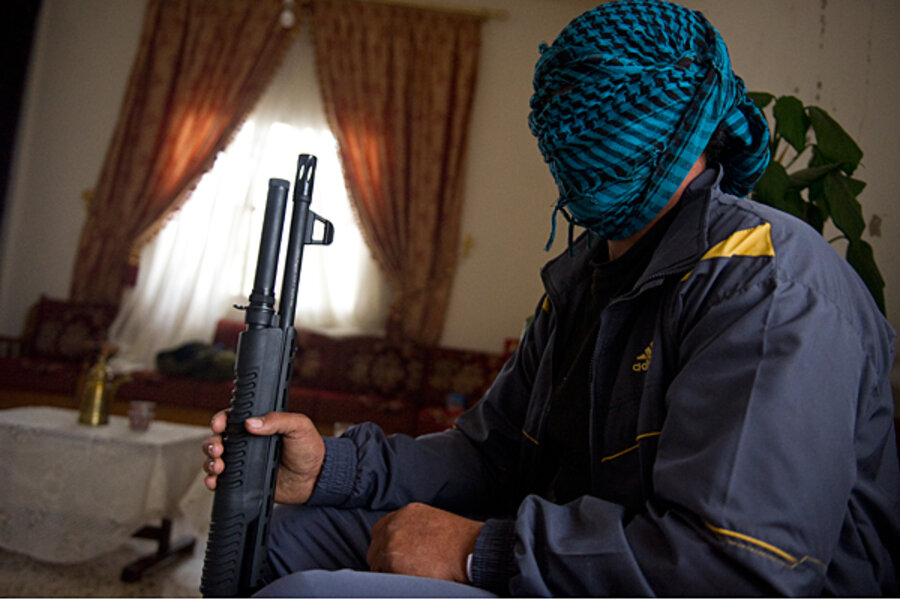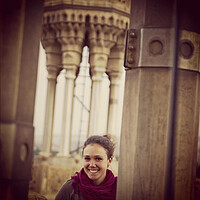For Syrian rebels, a relentless game of cat-and-mouse
Loading...
| North Bekaa Valley, Lebanon
In the flat, open Syrian-Lebanese border region, the strapped Syrian rebels have no choice but to let ground they capture fall back into enemy hands.
The Free Syrian Army (FSA) lacks the weaponry it needs to hold ground in the face of the regime forces’ air strikes. Instead, it attacks Syrian Army positions along the southern border, takes them over just long enough to rush supplies and fighters in from Lebanon, and retreats before the regime planes arrive.
The rebels farther north have managed to take and hold a solid bloc between Aleppo and the Turkish border, which they have dubbed “Free Syria.” (Read this story about the "uneasy normal" of life in rebel-held Syria). But it is a very different story between Homs, Syria’s third-largest city, and the border with Lebanon, some sparsely-populated 20 miles away. (See a map here.)
The endless battle for turf underscores the challenges the rebels face simply holding ground as the conflict enters its 21st month. Short on supplies and heavy weaponry, and up against a regime believed to be getting help from Russia, Iran, and Hezbollah, the rebels have struggled to break a stalemate and are desperate for something, whether it is more weapons or new tactics, that could tip the scales in their favor.
Two FSA fighters – who tote mismatched weapons and whose civilian clothing and shoes are ill-suited for fighting, or even sneaking across a border – rest in the living room of a local Sunni who lives about 10 miles from the border and trains FSA fighters. Having just crossed into Lebanon for medical supplies overnight, they describe a battleground always in flux. Towns and border crossings constantly change hands, and the rebels have no permanent bases.
The two men belong to one of several 25-man units that make up Jihad to Liberate Syria, the local anti-Assad force. They have long lived among the roughly 25 villages inside Syria that are populated by both Sunnis and Shiite Lebanese, and that have split down sectarian lines since Syria’s war began. The Sunnis typically back the FSA, while the Shiites typically back the regime – particularly its ally, the Lebanese militant group Hezbollah, believed to be fighting alongside the Assad regime’s forces. Borders and nationality matter much less than religious sect there.
The men say they know they are fighting Hezbollah, not the Syrian Army, because although the men wear Army uniforms, they “don’t look Syrian” and their bandannas bear the inscription “Ya Ali,” a Shiite battle cry.
Both the Lebanese FSA and Hezbollah fighters know the territory well. While there is a tacit agreement that they will not attack each other while in Lebanon, once back in Syria, that intimate knowledge of the battleground will be used against each other.
But a home advantage only goes so far. Echoing comments from rebels elsewhere in Syria, the FSA fighters say they are outmatched by the Army’s air power. Without adequate anti-aircraft weapons, they can only hold territory for a couple hours before regime planes swoop in, forcing retreat. Now, attacks are not to hold ground, but to build up capabilities.
Rabiye, a fighter who sports a dark blue track suit and sneakers more suited for city streets, says that they have more weapons than before, but still not enough. The ones they have – 23-millimeter anti-aircraft guns – aren’t capable of shooting down the regime planes.
“The main objective of the Free Syrian Army attacking Syrian Army bases is to capture many weapons and retreat quickly,” says the local Sunni who trains FSA fighters. “We need an air defense system. We can’t keep anything on the ground.”






